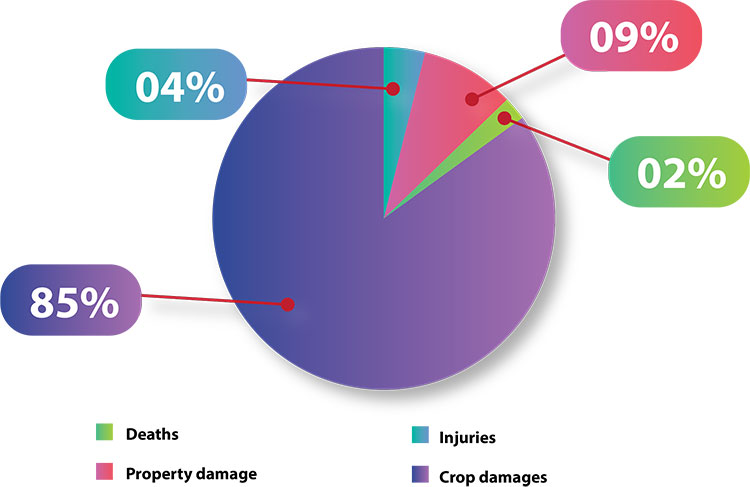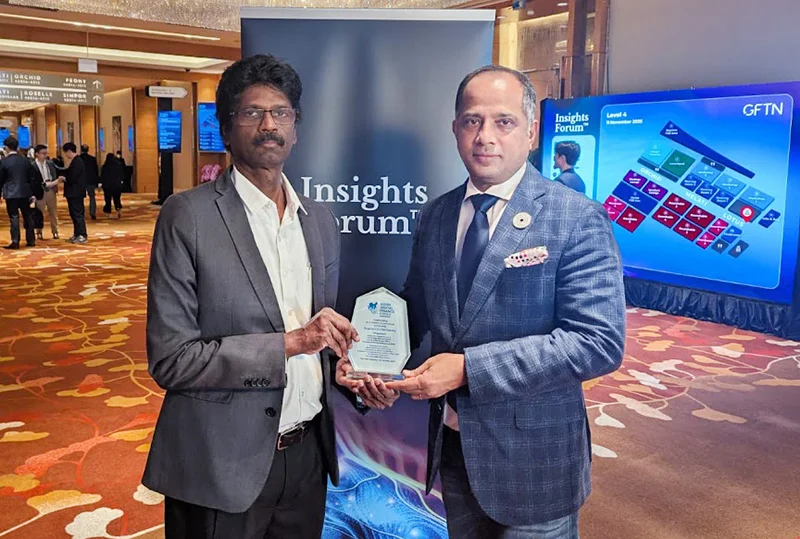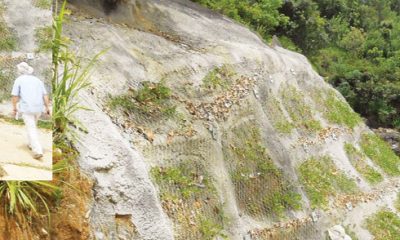Business
Bridging conservation and livelihoods: Addressing the Human-Elephant Conflict in Sri Lanka on World Elephant Day

By Ruwan Samaraweera
Written ahead of World Elephant Day, observed on 12 August 2023.
On World Elephant Day, attention turns to the unique challenges faced by Sri Lanka in the realm of human-elephant conflict (HEC). HEC’s escalating toll paints a stark reality. Human communities endure property damage, crop loss, and tragic fatalities, amplifying poverty and socio-economic instability. In 2022, as per the Department of Wildlife Conservation (DWC), Sri Lanka documented a total of 145 human fatalities resulting from HEC. Simultaneously, elephants face habitat loss, injuries, and mortality due to retaliatory killings and encounters with human settlements. DWC reported a substantial rise in elephant mortality, reaching a peak with a recorded total of 433 deaths in 2022. Therefore, the urgent need for implementing effective solutions to minimise HEC in the country becomes paramount.
Understanding the Conflict
 The HEC is one of the widespread environmental issues with severe socio-economic and political implications in Sri Lanka. It arises from numerous reasons, wherein the competition for resources and land between humans and elephants being the most prominent. Rapid urbanisation, encroachment into elephant habitats, conversion of forests for agriculture, and other infrastructure development projects like road infrastructure have disrupted the elephants’ traditional migration patterns and fragmented their habitats. Consequently, elephants often venture into human settlements in search of sustenance, leading to conflicts that endanger both elephants’ and human lives.
The HEC is one of the widespread environmental issues with severe socio-economic and political implications in Sri Lanka. It arises from numerous reasons, wherein the competition for resources and land between humans and elephants being the most prominent. Rapid urbanisation, encroachment into elephant habitats, conversion of forests for agriculture, and other infrastructure development projects like road infrastructure have disrupted the elephants’ traditional migration patterns and fragmented their habitats. Consequently, elephants often venture into human settlements in search of sustenance, leading to conflicts that endanger both elephants’ and human lives.
Sumanadasa, a farmer in Galgamuwa, shares his experience of frequent elephant raids on their crop lands. He says, “As a farmer, my family depends on the crops we cultivate for our livelihood. However, the constant raids by elephants have taken a toll on our lives. We wake up each morning with anxiety, not knowing if our fields will be destroyed overnight. Our hard work and investment go in vain as elephants trample and devour our crops. It has become a struggle to provide for our family and maintain a sustainable income.”
These heart-wrenching stories highlight the profound impact of the HEC on individuals and communities. Beyond the economic losses, the emotional trauma and loss of human lives are immeasurable. The alarming increase in human and elephant fatalities resulting from HEC in Sri Lanka underscores the gravity of the situation. The average annual human death rate due to HEC increased by approximately 42% from 1992 to 2021, with the 2021 figure reaching 142 deaths. Despite fluctuations, the number of HEC-caused human deaths has consistently exceeded 100 per year over the last three years, resulting in a total of 2,111 human and 5,954 elephant casualties within the last 30 years. Apart from that, as already mentioned, crop damages emerge as a pervasive and severe issue. An IPS study revealed that among the crops grown in HEC-prone areas, paddy is the most vulnerable crop for elephant attacks, following coconut and banana. Furthermore, farmers have altered their cropping seasons due to this wild elephant risk.
Recognising the urgency of addressing the HEC, Sri Lanka has undertaken various policy initiatives and conservation efforts. Some of these are institutionally arranged measures while some are voluntary adjustments by affected communities. The DWC plays a crucial role in mitigating conflicts, implementing institutionally arranged measures such as creating elephant corridors, elephant drives, thunder flashes distribution, habitat enrichments and installing electric fences to reduce human-elephant interactions. Additionally, community-based conservation projects involving local communities in decision-making have shown promising results in promoting peaceful coexistence in some parts of the country. As a multifaceted approach to mitigating HEC, DWC has been implementing the “GajaMituro‟ programme since 2008. Under this, the DWC launched the aforementioned mitigating measures in 58 Divisional Secretariat Divisions (DSD) of 18 Districts. Similarly, residents in affected areas practice numerous voluntary measures to deter problems from elephants. Some examples of voluntary measures include erecting watch huts, creating noise (e.g., firing thunder flashes, shouting), establishing biological fences, and using lighting methods such as fires, kerosene lamps, flares, and flashlights to frighten and chase away the elephants. However, none of the mitigation measures has given a perfect solution due to various limitations. For instance, some elephants develop adaptive behaviours to actions such that thunder flashes, thus making those no longer effective against them.
Hence, to effectively manage the HEC, innovative solutions are imperative, and the government, academia, and other interested stakeholders continue to actively pursue innovative approaches and optimal strategies to effectively tackle the issue of HEC in Sri Lanka. Technology-driven approaches, including using infrared cameras, drones, sensor-based systems, and satellite imagery to detect habitat monitoring and elephant movements and then using mobile communication systems to alert nearby communities in real-time (early warning system), can help prevent conflicts. Through educational programmes in schools and community outreach initiatives, a sense of responsibility can be instilled while highlighting innovative market-based solutions like insurance. An IPS study found that insurance as a market-based solution can deliver promising results. These solutions can be complemented by agro-ecological practices such as cultivating elephant-resistant crops, bee-fencing and establishing community-managed buffer zones around protected areas.
Conclusion
As World Elephant Day serves as a powerful global platform for raising awareness on elephant conservation, Sri Lanka can capitalise on this occasion to promote understanding, empathy, and conservation values within local communities.
It is crucial to acknowledge that no single solution can entirely address the complexities of the HEC issue, given its regional variations, changes in elephant behaviour, and diverse human activities. Therefore, adopting a holistic approach that combines suitable traditional methods alongside innovative strategies, involving local communities, and considering the conflict’s ecological, economic, and social aspects becomes essential for effective and sustainable HEC mitigation. Collaboration among government agencies, conservation organisations, and local communities becomes paramount in achieving a harmonious coexistence where elephants roam freely, and humans thrive.
By adopting this comprehensive approach, Sri Lanka can strive towards a future where both elephants and humans coexist peacefully, safeguarding the well-being of these majestic creatures for generations to come. World Elephant Day serves as a poignant reminder that collective action and shared responsibility are crucial in preserving the rich biodiversity and cultural heritage that define this island nation.
Link to blog: https://www.ips.lk/talkingeconomics/2023/08/10/bridging-conservation-and-livelihoods-addressing-the-human-elephant-conflict-in-sri-lanka-on-world-elephant-day/
Ruwan Samaraweera is a Research Officer at IPS with a background in entrepreneurial agriculture. He holds a Bachelor’s in Export Agriculture from Uva Wellassa University of Sri Lanka. His research interests are environmental economics, agricultural economics, macroeconomic policy and planning, labour and migration, and poverty and development policy. (Talk to Ruwan – ruwan@ips.lk)
Business
Cabinet approves establishment of two 50 MW wind power stations in Mullikulum, Mannar region

Adhering to the broad plan of the Government to reach the objective of accomplishing 70% of the country’s electricity supply from renewable energy sources by the year 2030, the approval of the Cabinet of Ministers was granted on 10.02.2025 to invite requests for resolutions from interested developers of the private sector in order to implement the Mullikulum Wind Power – 100 Mega Watts (two (02) wind power stations of
50 Mega Watts each) on the basis of construction, ownership and execution with a monitoring period of 20 years.
Accordingly, requests for proposals have been called to implement the relevant project by adhering to the international competitive bidding methodology, and seven (7) prospective project proposals were submitted.
Evaluating the said proposals, based on the recommendations submitted by the negotiation committee appointed by the Cabinet of Ministers, the Cabinet of Ministers granted approval to the resolution furnished by the Minister of Power to award the contracts of establishing the two (02) 50 Mega Watts Wind
Power Stations to Consortium of Vidullanka PLC & David Pieris Motor Company (Lanka) Limited and WindForce PLC.
Business
UNDP, together with partners, brings together immersive insight into the cruel realities of SGBV

The 16 Days of Activism Against Gender-Based Violence is a global campaign observed annually from 25 November to 10 December, beginning on the International Day for the Elimination of Violence against Women and concluding on Human Rights Day. The campaign aims to raise awareness and inspire collective action to end all forms of violence against women and girls.
This year, in line with this, the United Nations Development Programme (UNDP), together with its key partners through ongoing flagship project initiatives, is taking a unique, never-before-seen approach to advocacy. ‘Through Her Eyes,
wef.aoEiska, அவளின் பார்வையில்’ narrates the heart-wrenching journey of ‘Sara’ in her search for justice through multi-medium storytelling that merges stage theatre, film and creative audio production techniques.
‘Through her eyes’ is in line with three UNDP Sri Lanka projects; Enabling Access to Justice for Victim-Survivors of SGBV in Sri Lanka funded by the Government of Canada and implemented together with UNFPA Sri Lanka; the Support to Justice Sector Project (JURE) funded by the European Union in partnership with the Ministry of Justice, and implemented together with UNICEF Sri Lanka; and the Action and Anticipation for The New Agenda for Peace (AAA) supported through UNDP’s Funding Windows with funding from the Governments of Denmark, Luxembourg and the Republic of Korea.
Commenting on the timeliness of such public activations, Azusa Kubota, Resident Representative, UNDP in Sri Lanka, stated, “As the country recovers from one of its worst natural disasters in its recent history, the focus on gender equality, inclusion, and structural change is more vital than ever. We all know SGBV leaves a deep scar in survivors, those around them and the society they live in. Yet, do we really know what it is like to live through that experience? In a crisis, how do we address root causes of SGBV that get exacerbated? We wanted to mark this year’s 16 days differently – by creating an experience where we, irrespective of our gender, culture, and all other differences, put ourselves in the shoes of those who live through the pain and hardships, and collectively think through ways in which we can tackle persistent challenges confronted by many. Our advocacy efforts aspire towards a nation and world free from SGBV- to achieve gender equality and empower. ‘Through Her eyes’ is a unique experience that is designed to bring this issue in front of a broad demographic audience, by bringing together stakeholders from across the Government, private sector, development partners, youth and CSOs, as we stand together to end SGBV and support Sri Lanka to build back better.”
Sharing the perspective from the Government of Sri Lanka, Minister of Justice Harshana Nanayakkara commented, “Through Her Eyes’ invites us to pause and truly understand the lived realities of survivors. It is a powerful reminder that every survivor who comes forward does so with immense courage. Their pathway to justice must be dignified, safe and free from fear. Ensuring the safety and empowerment of women and girls is not a task that can be achieved in isolation. A holistic approach is vital. Law enforcement, the judiciary, health services, social services, educators, civil society, the private sector and communities must stand together as allies.”
As a key partner, Kiril Iordanov, Head of Cooperation at the High Commission of Canada noted, “Addressing GBV is a shared responsibility. Canada continues to collaborate with partners to design and champion innovative solutions. Our approach is rooted in the belief that promoting gender equality and empowering women and girls has a multiplier effect on development. By placing women and girls at the centre, we contribute to building a more peaceful, inclusive, and prosperous world.”
The Safe Space of this immersive production also highlights the support and work being carried out by the projects, to support better access for justice for victim-survivors of SGBV, capacity building for relevant public sector institutions, media ethics when reporting SGBV and the promotion of male allyship and bystander intervention as a mechanism to eradicate SGBV in Sri Lanka.
Highlighting the priorities of the European Union, Carmen Moreno, Ambassador of the European Union to Sri Lanka and the Maldives, commented, “Gender-based violence endures when access to justice is made difficult by fear, stigma or indifference. This exhibition invites us to understand the experience through the eyes of the victim, and it forces us to question—and dismantle—the barriers that allow violence to continue without consequences. Justice systems Justice systems must act with determination in confronting this problem, but they cannot do so in isolation. Real change requires a society that supports women, recognises the realities of gender-based violence, and refuses to look away.”
In light of the current situation of the country, the event also hosted an interactive dialogue on the theme ‘Delivering Economic Independence for Survivors of Sexual and Gender-based Violence during Crises’ on the sidelines of the event. With participation from key individuals, including the Government, development partners, private sector leaders, civil society organisations and youth groups, the dialogue looked at key areas of Gender-responsive and intersectional crisis planning; protection, safety, and justice built into disaster preparedness and humanitarian response; safeguarding shelter design, ensuring access to health and reproductive services, psychosocial support, and safe reporting mechanisms.
The campaign aims to raise awareness and inspire collective action to end all forms of violence against women and girls. It calls on governments, organisations, and individuals to challenge harmful gender norms, support survivors, and demand accountability from perpetrators.
‘Through Her Eyes, wef.aoEiska, அவளின் பார்வையில்’ is open to the public from the 2nd to 7th of December from 10 AM to 7 PM at the Sri Lanka Foundation Institute.
To know more and engage in the immersive experience: https://go.undp.org/through-her-eyes
Business
Outstanding AI & Fintech Governance Leadership Award 2025 for Sopnendu Mohanty

Sopnendu Mohanty, former Chief FinTech Officer of the Monetary Authority of Singapore (MAS) and current Group CEO of the Global Finance & Technology Network (GFTN), has received the Outstanding AI & Fintech Governance Leadership Award 2025 for his global contribution to responsible fintech advancement, cross-border policy innovation, and AI governance.
While the recognition was announced at the Asian Digital Finance Forum & Awards held at Port City Colombo, the formal handing-over ceremony was held recently in Singapore, during the GFTN Insights Forum that took place in parallel with the Singapore FinTech Festival 2025 at Marina Bay Sands Expo & Convention Centre.
Presenting the award, Rajkumar Kanagasingam, Convener of the Asian Digital Finance Forum & Awards and Industry Fellow of the Global Fintech Institute (Singapore), lauded Mohanty’s unique global impact.
“Sopnendu has set global benchmarks in innovation-friendly regulation, Kanagasingam said.
“From cross-border payment connectivity to AI ethics and multi-CBDC frameworks, his leadership has not only shaped Singapore’s fintech ecosystem but has helped entire regions transition into the digital economy responsibly.”
He added that Mohanty’s strategic influence continues beyond regulatory leadership.
“His ability to galvanise central banks, policymakers and innovators onto common platforms is rare. What he built in Singapore is now influencing multiple jurisdictions, and that continuity through GFTN is immensely valuable.”
Serving from 2015 to 2025 as MAS’s inaugural Chief FinTech Officer, Mohanty is widely acknowledged for transforming Singapore into one of the most forward-looking and trusted digital finance environments.
Mohanty has also endorsed Sri Lanka’s initiative to shape the Colombo International Financial Centre (CIFC) at Port City Colombo as a South Asian fintech gateway. He was presented with an interim policy blueprint during the DigiEcon Global Investment Summit.
By Ifham Nizam
-

 News4 days ago
News4 days agoOver 35,000 drug offenders nabbed in 36 days
-

 Features2 days ago
Features2 days agoFinally, Mahinda Yapa sets the record straight
-

 News3 days ago
News3 days agoCyclone Ditwah leaves Sri Lanka’s biodiversity in ruins: Top scientist warns of unseen ecological disaster
-

 Business6 days ago
Business6 days agoLOLC Finance Factoring powers business growth
-

 News6 days ago
News6 days agoCPC delegation meets JVP for talks on disaster response
-

 News6 days ago
News6 days agoA 6th Year Accolade: The Eternal Opulence of My Fair Lady
-

 News4 days ago
News4 days agoRising water level in Malwathu Oya triggers alert in Thanthirimale
-

 Features5 days ago
Features5 days agoThe Catastrophic Impact of Tropical Cyclone Ditwah on Sri Lanka:













